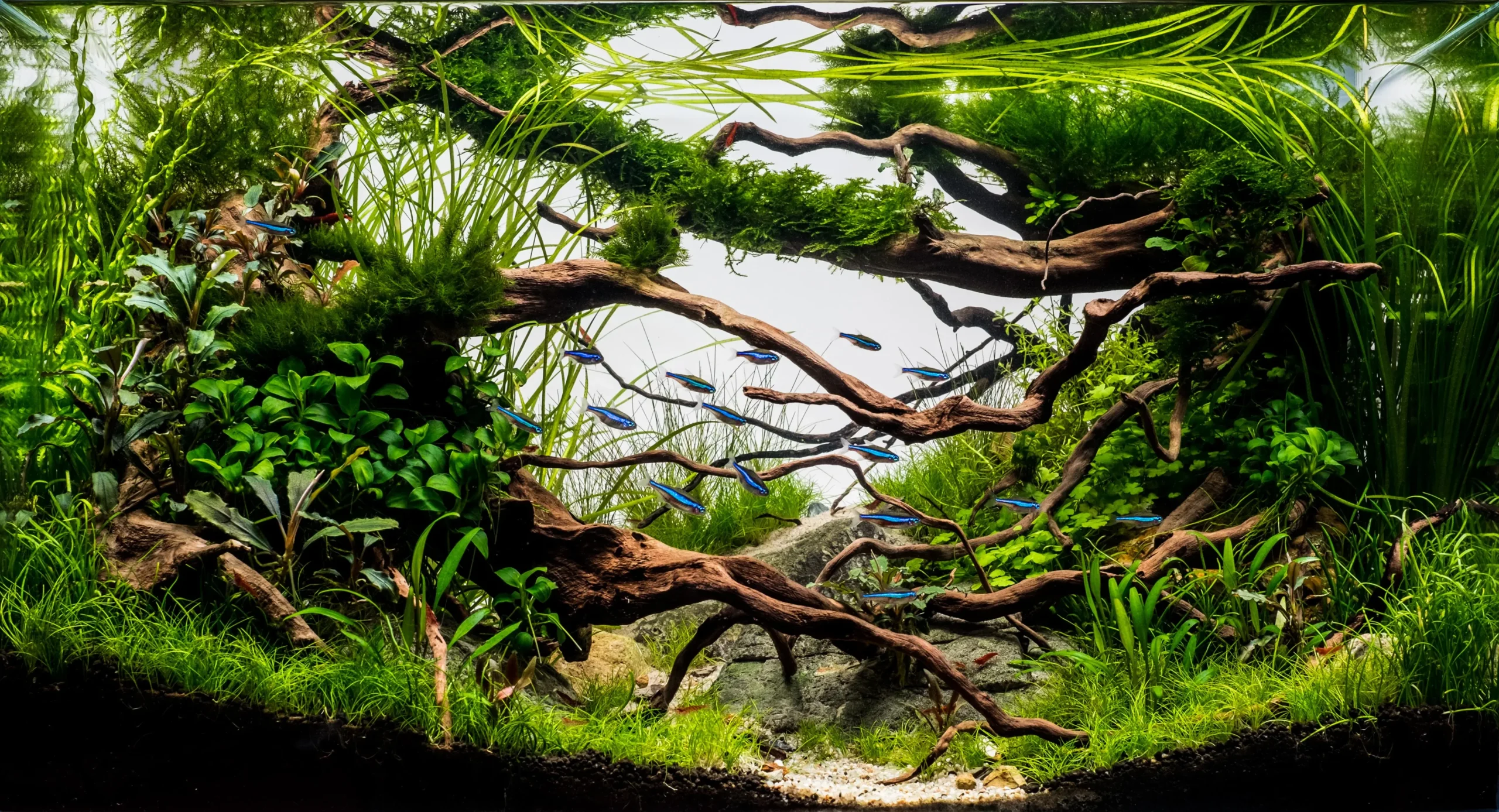Creating a stunning freshwater aquascape involves careful consideration of every element, and the type of wood you choose can significantly impact the overall aesthetic and health of your aquarium. In this guide, we’ll explore the best types of wood for freshwater aquascapes, offer recommendations, and provide essential tips for incorporating wood into your aquarium.
Best Types of Wood for Freshwater Aquascapes
Malaysian Driftwood:
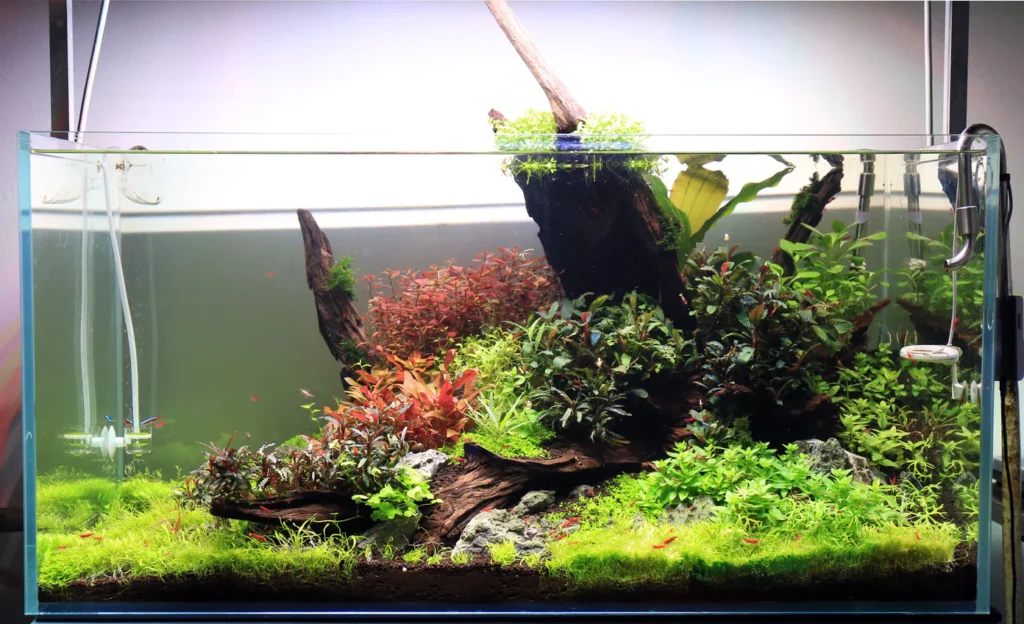
- Appearance: Malaysian driftwood is known for its intricate, branching structures and unique shapes.
- Durability: Resistant to decay and can last for an extended period.
- Compatibility: Suitable for a variety of freshwater setups, including planted tanks.
Malaysian driftwood is favored for its intricate branching structures and unique shapes. This durable wood option is suitable for various freshwater setups, including planted tanks. Its appealing appearance adds a natural touch to the aquascape, creating an engaging environment for aquarium inhabitants.
Spider Wood:

- Appearance: Spider wood boasts a delicate, spider-like appearance with multiple branches.
- Benefits: Offers hiding spots for fish and provides an interesting focal point.
- Preparation: Soak spider wood before placing it in the aquarium to minimize tannins released into the water.
Recognized for its delicate, spider-like appearance with multiple branches, spider wood is an eye-catching choice for freshwater aquariums. Beyond its aesthetic appeal, it offers hiding spots for fish and serves as an interesting focal point in the tank. Soaking before placement helps minimize tannin release.
Mopani Wood:
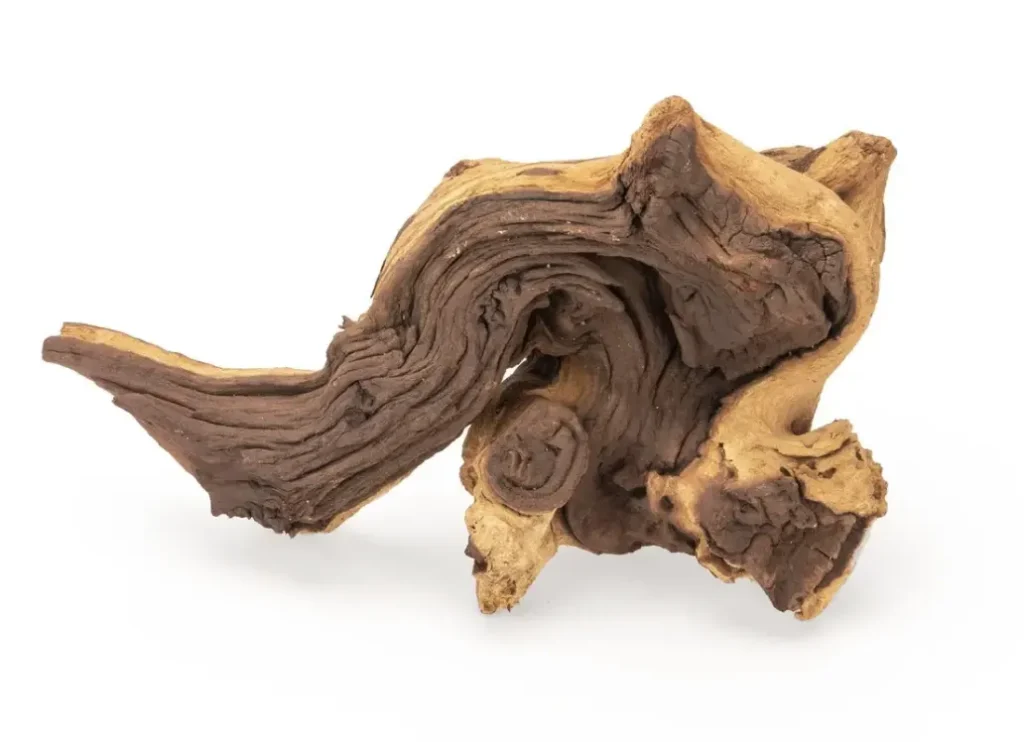
- Appearance: Mopani wood features a rich brown color and unique shapes.
- Characteristics: Releases tannins initially, but they decrease over time.
- Use: Ideal for aquariums with African cichlids or other species that prefer slightly acidic water.
Mopani wood, characterized by its rich brown color and unique shapes, is an ideal choice for aquariums with African cichlids or species that prefer slightly acidic water. While it initially releases tannins, these decrease over time. Mopani wood adds visual interest to the aquascape and enhances the overall appeal of the aquarium.
Cholla Wood:
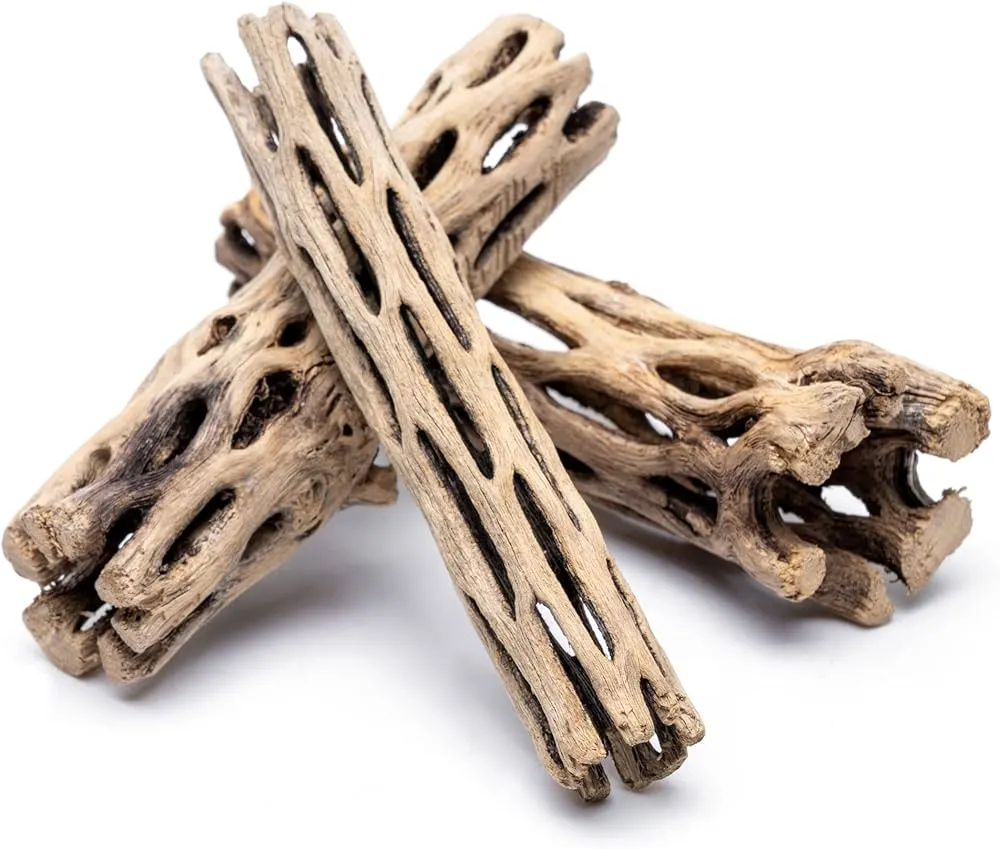
- Appearance: Cholla wood is characterized by its porous, tube-like structure.
- Texture: Provides a unique texture, ideal for attaching moss and plants.
- Benefits: Safe for aquarium use, Cholla wood enhances biological filtration and offers refuge for small fish and invertebrates.
Cholla wood’s distinctive appearance and porous nature make it an excellent addition to freshwater aquariums. Beyond its aesthetic appeal, Cholla wood enhances the biological filtration of the tank and serves as a functional and attractive refuge for small aquatic inhabitants.
Bogwood:
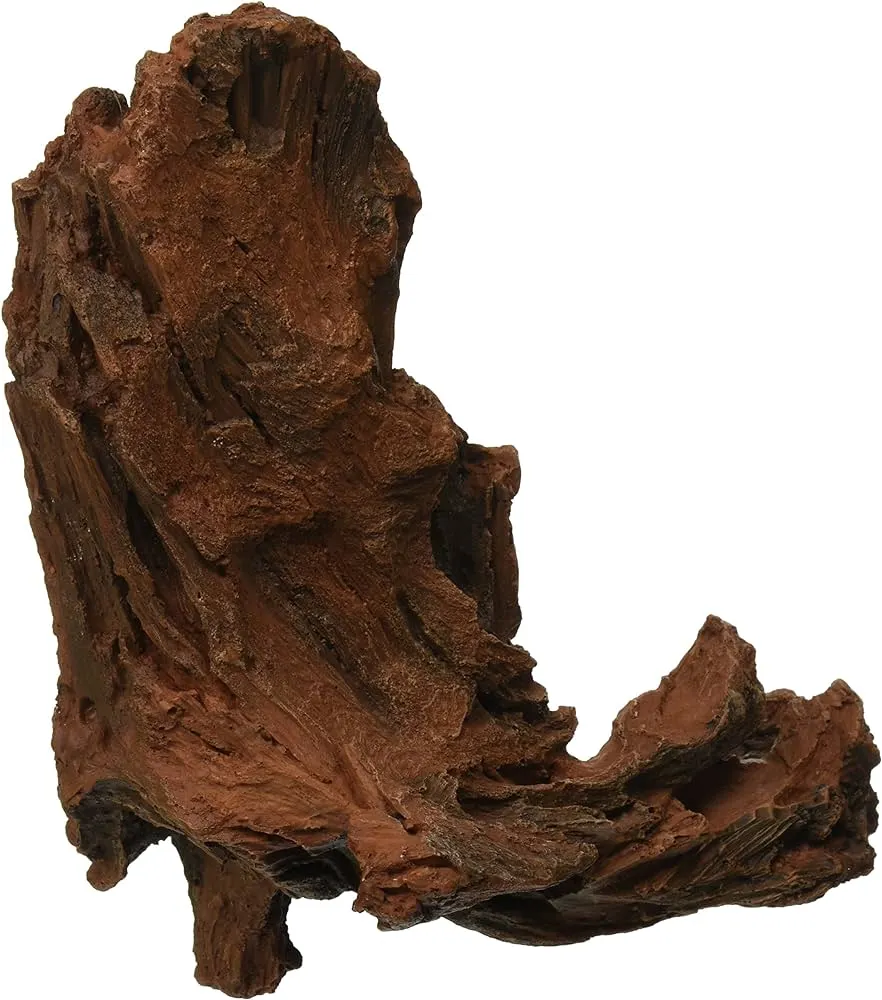
- Appearance: Bogwood, or swamp wood, often has twisted and gnarled shapes.
- Characteristics: Known for its dense structure and ability to resist decay.
- Aquascape Compatibility: Adds a natural and aged look to the aquarium, suitable for various setups, including biotope aquariums.
With its twisted and gnarled shapes, bogwood brings a touch of the wild to freshwater aquascapes. Its dense structure ensures durability, and it’s well-suited for creating a natural and aged look in the aquarium. Bogwood is particularly suitable for those aiming to replicate specific biotopes within their tanks.
Recommendations for Using Wood in a Freshwater Aquarium

Soaking and Boiling:
- Soak wood in water for several days to reduce tannin leaching.
- Boiling wood helps eliminate potential contaminants and accelerates the waterlogging process.
Placement:
- Consider the natural flow of your aquarium when placing wood to ensure proper water circulation.
- Strategically position wood to create caves and hiding places for fish.
Maintenance:
- Regularly clean the wood surface to prevent the accumulation of algae and debris.
- Monitor water parameters, especially pH and hardness, to ensure a stable environment.
Changes in Water Chemistry from Wood Aquascapes
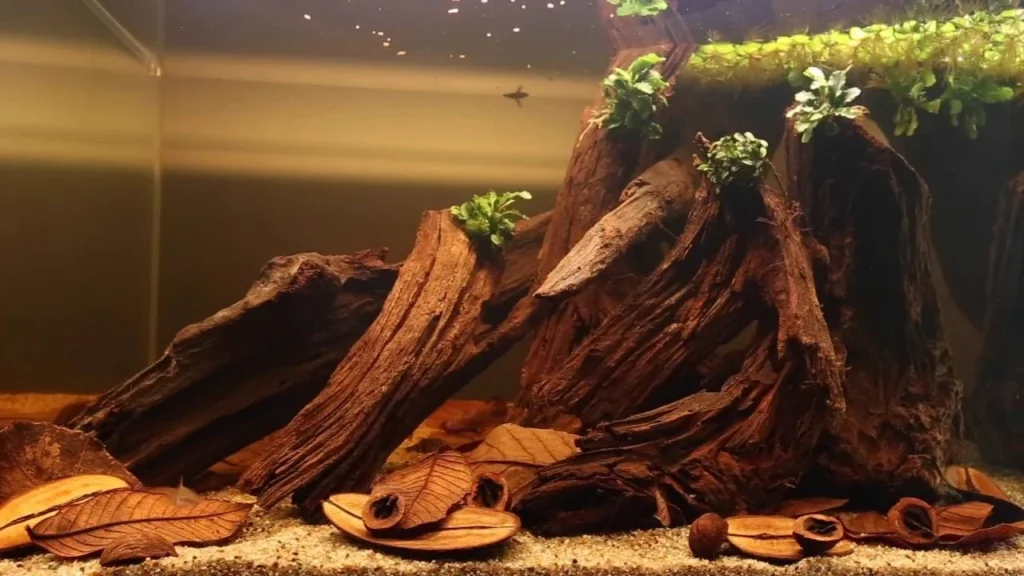
Tannin Release:
- Wood releases tannins, which can tint the water.
- While tannins are generally harmless, they may lower pH levels. Regular water changes can mitigate this effect.
pH and Hardness Impact:
- Certain woods can slightly lower pH and water hardness.
- Test water parameters regularly and adjust as needed to maintain a stable environment for your aquarium inhabitants.
Conclusion: Choosing the right wood for your freshwater aquascape is a crucial step in creating a visually appealing and healthy environment for your aquatic friends. By following the recommendations and tips provided in this guide, you can confidently incorporate wood into your aquarium while managing any potential changes in water chemistry.
Whether you opt for the intricate designs of Malaysian driftwood, the delicate branches of spider wood, or the rich tones of mopani wood, your freshwater aquascape is sure to thrive with the right combination of wood and thoughtful placement.

